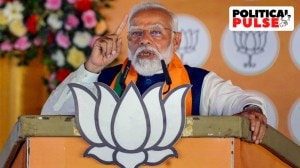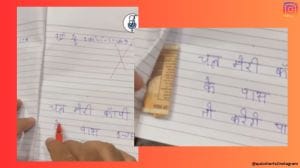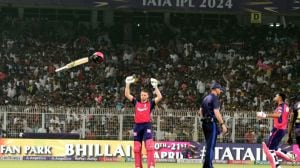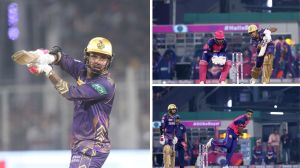- India
- International
Why January 26 was chosen to be the Republic Day
India's 71st Republic Day 2020: The Constitution was adopted on November 26, 1949 and the day chosen to become a sovereign republic was January 26, 1950 — 894 days after the British left the country, India formally had total independence.
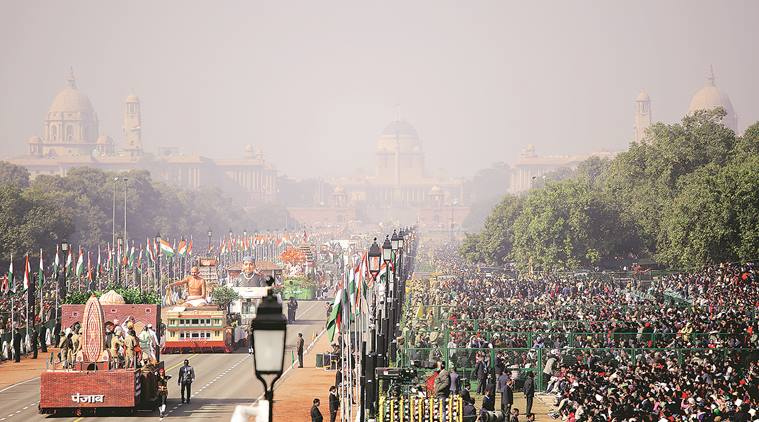 The idea of the Republic Day parade is believed to have germinated from the Delhi Durbars of the British Empire, but it was modified by Nehru
The idea of the Republic Day parade is believed to have germinated from the Delhi Durbars of the British Empire, but it was modified by Nehru
Republic Day 2020: The date of India’s independence from the British came on August 15, but it was not a date of India’s choosing — it was thrust upon them by Lord Louis Mountbatten as “it was the second anniversary of Japan’s surrender” in World War II to him. In contrast, January 26 was chosen as the Republic Day by Indians themselves, for it had held immense significance for the country for two decades.
At its annual session in Lahore in December 1929, after Jawaharlal Nehru was elected the party president, the Indian National Congress passed a resolution for “purna swaraj” or complete independence from the British. “The British government in India has not only deprived the Indian people of their freedom but has based itself on the exploitation of the masses, and has ruined India economically, politically, culturally, and spiritually. We believe, therefore, that India must sever the British connection and attain Purna Swaraj or complete independence,” said the 750-word resolution.
This was a clean break from Congress’s past demands of a dominion status for India, nine years after Communist leader and poet Hasrat Mohani first asked for complete independence from the British in 1921 at an All-India Congress Forum. In India Under the Shadows of Empire (2009), scholar Mithi Mukherjee has argued that the Purna Swaraj resolution was a critical component of Congress’s changing strategy of engaging with the British: the demand for freedom was now made in the language of justice and not in terms of charity.
ALSO READ | Republic Day 2020 LIVE updates: Celebrations to begin shortly from National War Memorial
At midnight of December 1930, Nehru hoisted the first swaraj flag — the Tricolour was to later form the basis of India’s national flag — on the banks of the Ravi river in Lahore. The Congress party passed another resolution fixing the last Sunday of January 1930, which fell on January 26, as Independence Day. The celebration, it decided, would begin with the hoisting of the flag all over India and the remaining day would be spent on constructive work as per Mahatma Gandhi’s agenda, such as spinning charkha, “service to the untouchables” and “reunion” of Hindus and Muslims.

Read Tavleen Singh’s Opinion | Celebrate the Constitution
The country’s response to Congress’ call for total independence took Nehru by surprise. In his autobiography, An Autobiography (1936), he noted: “Independence Day came, January 26th 1930, and it revealed to us, in a flash, the earnest and enthusiastic mood of the country. There was something vastly impressive about the great gatherings everywhere, peacefully and solemnly taking the pledge of independence without any speeches or exhortation”.
After 1930, the day was celebrated every year as Independence Day, notwithstanding the fact that India was to gain liberation from the British only in 1947. Even then, India still was a British dominion and owed formal allegiance to the British Crown. The Constitution was adopted on November 26, 1949 and the day that was chosen to become a sovereign republic was January 26, 1950 — rather significant, for 894 days after British rulers left the country, India formally had total independence from the British.This was noted by Sardar Vallabhbhai Patel in his public address that day: “Exactly 20 years from today, the people of India took a solemn pledge of complete independence… Although we obtained independence on August 15, 1947, it was not complete in the sense of the pledge that we took. Today, by the grace of God, that pledge has been completely fulfilled.”
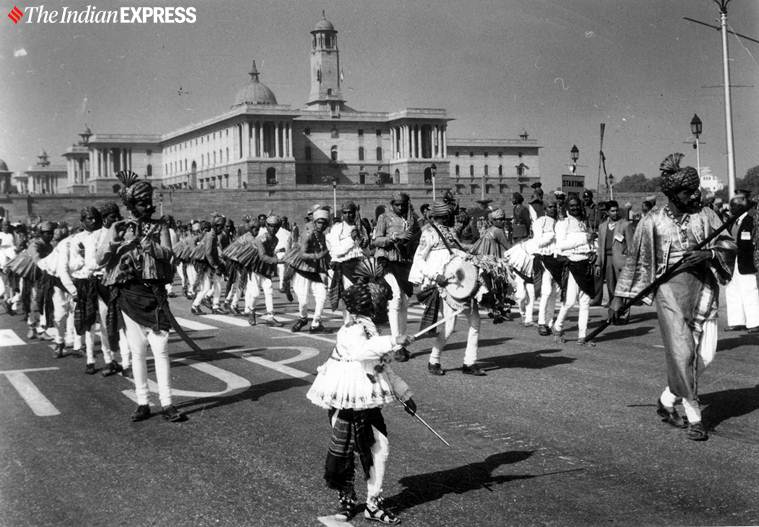 Folk dancers from Gujarat performing Ras dance in Republic Day rehearsal parade. (Express archive photo)
Folk dancers from Gujarat performing Ras dance in Republic Day rehearsal parade. (Express archive photo)
The ceremony on the first Republic Day has little similarity with the event held nowadays. Fauji Akhbar reported on February 4, 1950: “At the most solemn ceremony, held in the brilliantly lit and high domes of the Durbar Hall at Government House, India was declared a Sovereign Democratic Republic exactly at 18 minutes past 10 on the morning of Thursday, January 26, 1950. Six minutes later, Dr Rajendra Prasad was sworn in as the President.”
The retiring Governor-General, C Rajagopalachari, read out the proclamation of the republic of India: “Now, therefore, it is hereby proclaimed that from this, the 26th day of January, 1950, India, that is Bharat, shall be a Sovereign Democratic Republic, and the Union and its component units, the States, shall exercise all powers and functions of government and administration in accordance with the provisions of the said Constitution.”
“The state drive started exactly at 2.30 pm. The 35- year-old coach, specially renovated for the occasion, bearing the new emblem of Ashoka’s capital and drawn by six sturdy Australian horses, carried the President and drove out of the Government House at a slow trot, escorted by the President’s bodyguard,” Fauji Akhbar reported on the ceremony which had the Indonesian President as the chief guest.
Also read | How our Constitution is a living, palpable force
“The drive ended exactly at 3.45 pm at Irwin Stadium (now Dhyan Chand National Stadium) where 3,000 officers and men of the three armed services of India and the police with massed bands had taken positions for the ceremonial parade. Here 15,000 people watched one of the most magnificent military parades in India’s recent history.”
The ceremonial parade changed form when it moved down the Rajpath in 1951. In the early years, it changed a few routes, including passing through Connaught Place, before settling for the current route: commencing from the gates of the Rashtrapati Bhavan, down the Raisina Hill on the Rajpath past the India Gate. In the 1980s, a proposal to reverse the route of the parade was shot down as it would have meant that the guns of paraded tanks would point towards the Parliament.
 The centre can hold: Prime Minister Pandit Jawaharlal Nehru was a patron of folk art forms, particularly dance. He used to meet folk dancers who came to the capital to participate in the Republic Day Parade. In this photo, taken at one such event, he is seen surrounded by dancers from Bombay. (Express archive)
The centre can hold: Prime Minister Pandit Jawaharlal Nehru was a patron of folk art forms, particularly dance. He used to meet folk dancers who came to the capital to participate in the Republic Day Parade. In this photo, taken at one such event, he is seen surrounded by dancers from Bombay. (Express archive)
The idea of the Republic Day parade is believed to have germinated from the Delhi Durbars of the British Empire, but it was modified by Nehru from 1953 by adding “performances, displays and exhibitions showing something not only of our cultural heritage but also of our cultural progress in the widest sense of the term”. During his time, the ceremony was handled by the ministries of defence and of education. Later, it came fully under the defence ministry.
In December 1949, the government had passed orders to replace the (British) “Crown on government buildings, on badges borne by government sepoys and on seals” by Ashoka Lions by January 26, 1950. While symbols changed, the commemorative occasion condenses two separate national moments, noted by Srirupa Roy in Beyond Belief: India and the Politics of Postcolonial Nationalism (2007): “It is a celebration of nationalist will, intention, or resolve, signifying the event of 1930, and it is a celebration of republicanism and constitutionalism, signifying the event of 1950. Moreover, the republican moment of 1950 is seen as an appropriate counterpart to the independence pledge of 1930, which is ‘completely fulfilled’ only when a state institution representing the sovereign nation is formally constituted.”
Apr 16: Latest News
- 01
- 02
- 03
- 04
- 05















